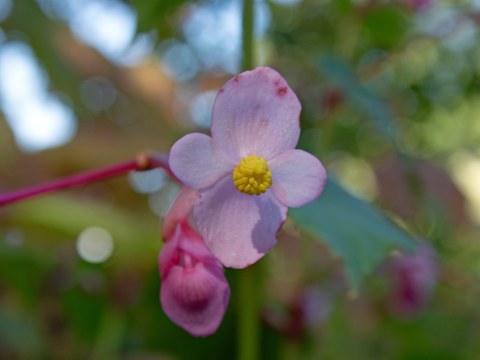Previous plants of the week - The Japanese begonia
Begonia grandis Dryand.

Die männliche Blüte der Japan-Begonie.
Contrary to what its name suggests, the Japanese begonia originally comes from China. It grows there in wooded valleys on the banks of streams and on damp, mossy rocks. It is now also naturalized in Japan and Korea.
Most of the more than 2000 begonia species live in the tropics. The Japanese begonia is one of the few hardy representatives. In harsh locations, winter protection is advisable, as the soil temperature should not fall below -12 °C. The perennial prefers shady to semi-shady locations with nutrient-rich, humus-rich and slightly acidic soil.
If you are looking for the plant in the Botanical Garden, you will find it near the administration building in the Chinese area. Patience is required in spring: the tubers rarely sprout before the end of May. The flowering period begins in August and ends with the first frost.
The fragrant, unisexual flowers are monoecious, arranged in terminal or axillary, loosely overhanging inflorescences. Male flowers have four, female flowers three pink to white petals. Pollinators are pollen-collecting bees, which always fly to the conspicuous sexual organs in the center of the flower. In the male flowers, a bundle of up to 140 yellow stamens provides them with food. The stigmas in the center of the female flowers are conspicuously curled and also bright yellow in color, so that they are also visited by insects, although they do not provide a food source for the bees. In their undersized, triangular-winged ovary, which is clearly visible from the side, countless dust-fine seeds ripen after pollination.
The German name for begonias - "Schiefblatt" - refers to the asymmetrical, heart-ovate leaves at the base of most species. The leaves of the Japanese begonia also have a striking peculiarity: in autumn, brood buds (bubillae) develop in the leaf axils, which root on contact with the soil and serve for vegetative propagation.
(KW 39)
